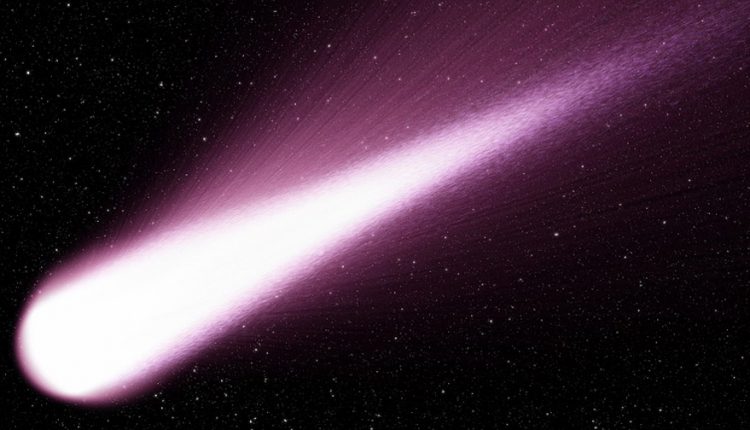Thanks to new research undertaken by a team of science staff from STFC’s Central Laser Facility (CLF) and RAL Space, the mystery of why comets travelling through Space give off X-ray emissions has been solved.
Scientists have long wondered why comets can radiate X-rays, given that X-rays are normally associated with hot objects like the Sun but comets are among the coldest objects in the Solar system.
When comets travel through the Solar system they interact with the Solar radiation, the Solar wind and the Solar magnetic field.
This interaction produces a visible atmosphere or coma around the comet and the observed cometary tail, and in some cases produces X-rays.
These X-rays are generated on the Sunward side of the comet where the Solar wind impacts the cometary atmosphere forming a bow shock.
How X-rays can be emitted from a comet
To investigate how X-rays can be emitted from a comet, a team of scientists from 15 research institutes performed experiments at the LULI laser facility in Paris where they replicated the interaction of the Solar-wind with a comet.
The STFC team involved in the project were instrumental in coming up with the scientific model for the interaction of the solar wind with the comet.
This included the theoretical model for the generation of plasma turbulence, the acceleration of electrons by the turbulence and the X-ray emission from the accelerated electrons.
The STFC team also supported a team from the University of Oxford in numerical simulations and undertook the target fabrication.
The experiment results
CLF’s Professor Bob Bingham led the STFC team involved in the project said:
“These experimental results are important as they provide direct laboratory evidence that objects moving through magnetized plasmas can be sites of electron acceleration- a very general situation in astrophysics that takes place not only in comets, but also in planetary magnetospheres, such as our own Earth, or even in supernova remnants, where the ejected material moves across the interstellar gas. The experiments also confirm theoretical models developed by the team.”
Other members of the STFC team included CLF’s Dr. Raoul Trines and Chris Spindloe and from STFC’s RAL Space facility Dr. Ruth Bamford.
For CLF’s Dr. Raoul Trines the highlight of the project was reproducing a force of Nature.
“As a theorist I find it amazing that it is possible to sensibly replicate astrophysical phenomena in the laboratory, to test our physical understanding of what Nature gets up to”.
For the experiments the research team fired laser beams onto a plastic foil, which exploded, causing a stream of electrons and ions to be expelled, forming a high speed flow of ionized gas (plasma) like the Solar wind.
The so-called laboratory ‘comet’
This ‘plasma flow’ then impacted onto a solid sphere, the so-called laboratory ‘comet’, placed nearly a centimetre away from the plastic foil, resembles what happens when a real comet passes through the Solar system.
It was found that electrons are heated to about a million degrees in the up-stream plasma by plasma turbulence.
These hot electrons are responsible for emitting X-rays but only in the presence of a magnetic field.
This work also sheds light on a cosmic ray mystery known as the injection problem. It is widely recognised that strong shock waves are expected to accelerate particles to very high energies, however, they require a source of particles fast enough to cross the shock, the injection problem.
Each time the particles cross the shock they gain energy. This latest experiment clearly demonstrates that plasma turbulence can provide a source of fast particles overcoming the injection problem.
From space to science
From the space science point of view, this research has been important in better understanding the mechanisms that create cosmic rays.
The most hazardous cosmic rays are the energetic particles either from the Sun or outside the Solar system. They can penetrate even thick walls like tiny bullets and present a very serious hazard to both astronauts and spacecraft technology.
Billions of pounds can be at risk due to Space Weather (as it is known) damaging satellites. Astronauts on long term missions outside the Earth’s magnetosphere could receive life threatening doses of radiation from such particles.
In order to protect them we need to understand how this radiation is created so we can predict it and give warnings or even shield against it using similar mechanisms to that which created it.
A laboratory experiment like this enables us to test our understanding of how cosmic rays are accelerated to such high energies, in a controlled environment. Something that is not easy to do directly in space.

